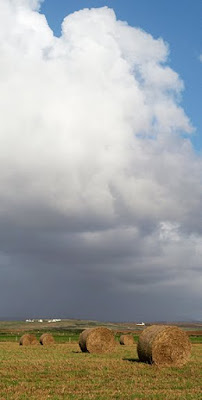Grab a dram, I'm gonna wax poetic on ya'.
Consider this...10, 12, 15 years ago (18, 21?...lucky you) the whisky in your glass was a plant, struggling in the soil for survival, seeking out its own water of life. Barley. If lucky, it experienced the right environmental conditions to grow into a strapping young kernel. If not, then it returned to the soil to help nourish the next lucky one. But it was a living thing nonetheless.
All too often we disregard the history of the food we put into our mouths in order to nurture our bodies. If we considered where our food comes from a little more, then perhaps we'd be less inclined to mistreat the gardens of our very existence, the air, water, and soil which give us life. You'd better take a sip, I think I'm getting too melodramatic here.
Back to the barley. It never ceases to amaze me that whisky is just that, plus water and yeast, which is also a living thing. And if you want to get really metaphysical, so is water. In the end, is it any wonder that whisky gained its name from the Gaelic term uisge beatha, itself descended from the Latin meaning "water of life".
There aren't many distilleries which are able to facilitate the entire cycle of whisky making from barley to bottle. Many don't strive to, but some make it a part of their mission statement. It takes a lot of homegrown barley to satisfy an entire mashbill. Even small distilleries like
Kilchoman on Islay only presently grows 30% of their own, and they don't (yet) have a bottling facility. The young
Abhainn Dearg on the west coast of Lewis is giving it a go, if the Atlantic lets them. Not sure how much Islay barley
Bruichladdich manages to bring in, but they may be the closest to the goal, even though they don't malt at the distillery.
So, this blog entry is in celebration of the lowly barleycorn, that often overlooked but essential first component that is the root of all whisky, from which all our drams stem, the seeds of our mal(t)content...OK, OK, here are the photographs.
The top one is harvested Bruichladdich barley. How do I know it was destined for the Laddie? I tasted a few grains left in the field which the birds hadn't gotten to and compared it to the new make I had just tasted at the distillery and...well, OK, I just read the sign on the fencepost which said so. The other image is what's left of a field of Golden Promise barley (what a great name) grown for
the Macallan. No telling fencepost sign, but the folks at the distillery.
Here, Islay birds feast on what John Barleycorn didn't get.
Slàinte











